This article is written by Kaustubh Phalke. The article exhaustively explores the famous case of Noor Aga vs. the State of Punjab and Ors. The case discusses an exception of the burden of proof i.e., the reverse burden of proof. Usually, the burden of proof is on the prosecution, which is to be proved beyond any reasonable doubt, whereas in the case of reverse burden of proof, the obligation is on the accused. Along with this, it discusses the constitutionality of various provisions of the customs law and the NDPS Act. The article starts with a brief introduction of the topic and then the details of the case, the facts of the case in brief, the issues discussed in the case, and the ratio decidendi, followed by case laws.
Table of Contents
Introduction
The judicial system works on the golden thread principle of criminal law, i.e., to have a fair and equitable system of justice against all adversarial parties, which is the presumption of the principle of innocence until proven guilty. In simple terms, an accused brought to trial must be given a fair chance to be heard and must not be held guilty until proven by the prosecution beyond any reasonable doubt but there is an exception to this golden rule, which is commonly known as the reverse burden of proof. It can be defined as the burden of proof initially falling on the accused once the prosecution has established certain foundational facts.
In India, along with the presence of the golden thread rule, there are certain offences in which the burden of proof initially lies on the accused, i.e., the culpable state of mind of the accused is presumed, and now he has to prove it wrong by adducing evidence beyond any reasonable doubt. There are two cases in which the reverse burden of proof works:
- If expressly stated by any provision reversing the burden of proof, such as Section 304B of the Indian Penal Code, 1860 dowry death and Sections 35 and 54 of the Narcotics Drugs and Psychotropic Substances Act, 1985 (hereinafter referred to as “NDPS”),
- If the accused has appealed against the judgement of the lower court in which his presumption was of guilt,
The reverse burden of proof was discussed in detail in the instant case, along with several other questions of grave importance, i.e., the constitutionality of certain provisions of the NDPS Act, and the standard and extent of the burden of proof on the prosecution with regards to the accused. The instant case is an appeal in front of the Apex Court against the judgement of conviction and sentence by the High Court of the Punjab and Haryana.
Details of the case
Case Title
Noor Aga Vs State of Punjab and Ors. (2008)
Citation
Criminal Appeal No. 1034 of 2008 (Arising out of SLP (Crl.) No. 5597 of 2006)
Date of judgement
09/07/2008
Name of the court
The Supreme Court of India
Bench
Justice S.B. Sinha and Justice V.S. Sirpurkar
Counsel on behalf of Appellant
Tanu Bedi, D.P. Singh, Sanjay Jain, Rajat Vohra, Prayanat Singh, Rachna Golchha and Sunil Roy, Advs
Counsel on behalf of Respondents
Vikas Sharma and B.V. Balaram Das, Advs for B. Krishna Prasad, Kuldeep Singh and A.K. Mehta Advs.
Disposition of the case
In favour of the accused.
Background of the case
The following witnesses were examined on behalf of the respondents:
- PW-1: Kulwant Singh-Inspector Customs (complainant and investigating officer).
- PW-2: KK Gupta- Superintendent-Customs (A Gazetted Officer).
- PW-3: Ashok Kumar- Inspector, Customs Department (deposited sample).
- PW-4: Rajesh Sodhi-Deputy Commissioner, custodian of case property (1-8-97 to 4-8-97).
- PW-5: KK Sharma-Inspector Incharge- Malkhana.
- PB: Recovery memo prepared by Shri Kulwant Singh-Inspector Customs (complainant and investigating officer).
- PC: Panchnama prepared by Shri Kulwant Singh-Inspector Customs (complainant and investigating officer).
The examination of the accused was done under Section 313 of the Criminal Procedure Code, 1973 (hereinafter referred to as “CrPC”). The appellant denied that the carton belonged to him and also denied his alleged confession.
On 7.06.2000, the learned session judge passed an order of conviction against the appellant under Sections 22 and 23 of the NDPS Act, 1985. He was sentenced to a rigorous imprisonment of 10 years and a Rs 1 lakh fine.
The appellant was dissatisfied with the impugned judgement of the Sessions Court and hence filed an appeal before the High Court of Punjab and Haryana. On 9.06.2006, the High Court dismissed the appeal. The appellant thus appealed before the Supreme Court of India.
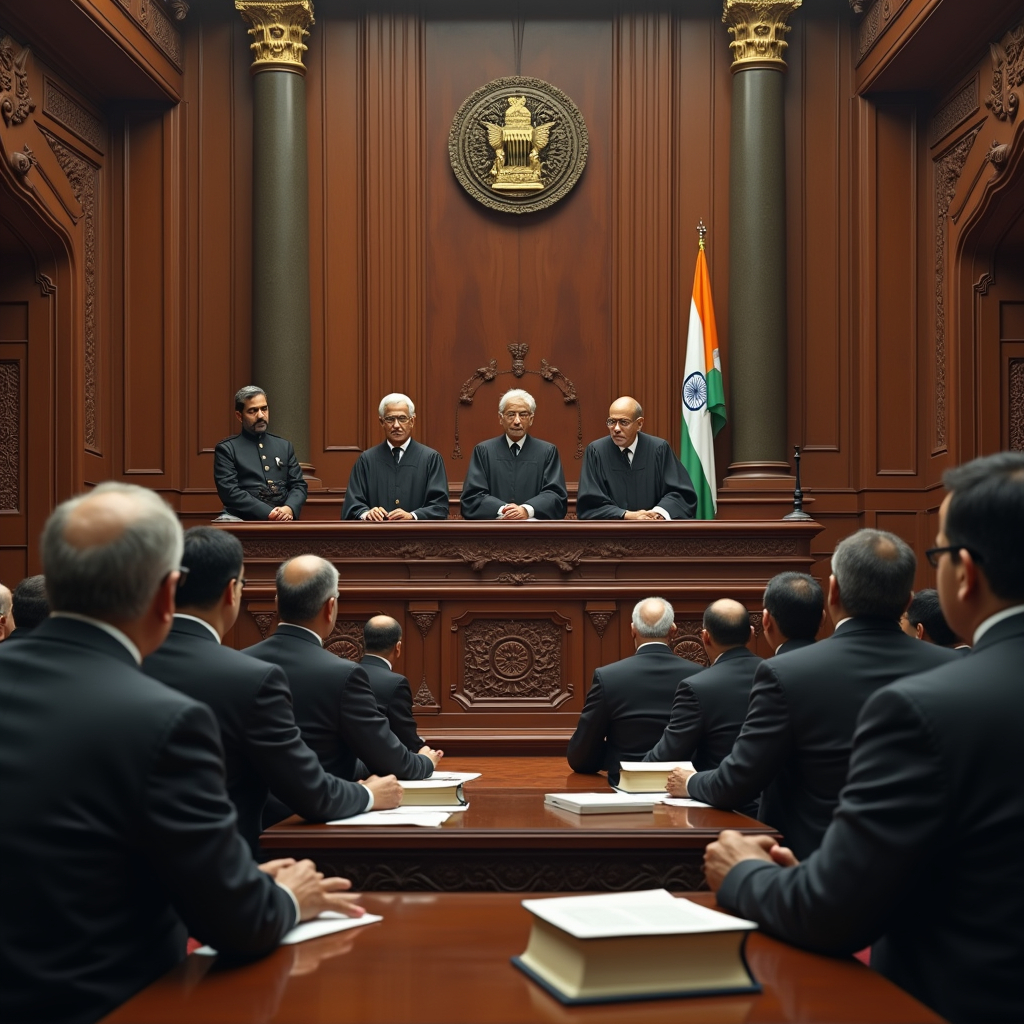
Facts of the case
The facts of the case are that Noor Aga was an Afghan national. He was one of the crew members of the Afghan Airlines and was carrying 1kg of heroin. For this unlawful act, he was arrested and prosecuted under the following provisions of the NDPS Act:
Section 22 which penalises matters regarding contravention vis-a-vis psychotropic substances and Section 23 which penalises matters regarding the import and export from India and the transhipment of narcotics and psychotropic substances.
On 1.08.1997 at about 6 p.m. the appellant arrived at Raja Sansi Airport and went for customs clearance, before the customs department under the Customs Act, 1962 (hereinafter referred to as “the Customs Act”). Noor was carrying a carton with him which, according to him, contained grapes. Kulwant, an inspector of the customs department, fell into great suspicion when he observed that the carton carried by the accused contained two walls. To clear this suspicion, he searched the accused and interrogated if the accused was carrying any disputed items, which he denied. As per the procedures, Kulwant Singh (examined as PW1) gave Noor options as to whether he wanted to be examined in front of a magistrate or a gazetted officer. He opted to get examined by a gazetted officer of the customs department. A gazetted officer of the customs department, Shri K.K. Gupta, along with two other witnesses, Mohinder Singh and Yusaf, examined him.
Further, the walls of the suspected carton were separated, where 22 polythene packets weighing 400g of brown powder were found. A sample from each polythene was taken, weighing 5g and the packets and the carton were sealed under a seal bearing no. 122 of the customs department. A panchnama and recovery memo was prepared by Kulwant Singh, and the brown-coloured powder was taken into possession. The recovered material was sealed into a cotton bag.
Arrest and purported confession
The appellant was in the custody of the customs department. He was arrested after 15 hours of recovery, his body was searched and the grounds of arrest were explained to him. Noor confessed his guilt.
Investigations and findings
On 5.08.1997, the samples were sent to the laboratory for testing, the weight of the samples recorded was 8.7 g.
On 2.09.1997, the reports from the laboratory were submitted, and the disputed white powder was diacetylmorphine, commonly called heroin. A complaint was filed in the Court whereof, Noor was charged under Section 22 of the NDPS Act and Section 23 of the NDPS Act.
On 30.09.1997, the contrabands were produced before the magistrate. According to the contentions of the appellant, this production was done for authentication, whereas the respondents in the instant case contradicted this and contended that this was done to obtain the judicial order for the destruction of contraband.
However, neither any application was filed for the destruction of the contraband nor any such order was passed by the learned magistrate.
Issues raised
- The first issue was whether the reverse burden imposed by Sections 35 and 54 is against constitutionality or human ethics.
- The second issue considered by the Court was whether the High Court erred in placing explicit reliance upon Section 108 of the Customs Act.
- Whether the instant appeal shall be allowed or not.
Arguments of the parties
Appellants
Ms Tanu Bedi appeared on behalf of the appellants in the instant case. Following were the arguments contended by the learned counsel on behalf of the appellants:
- Sections 35 and 54 of the NDPS Act are draconian and hence impose a reverse burden of proof on the accused, which is contrary to Article 14(2) of the International Covenant on Civil and Political Rights which provides for the principle of innocent until proven guilty of the accused under Articles 14 and 21 of the Constitution of India.
- It is the duty of the prosecution generally to establish the burden of proof beyond any reasonable doubt, but the same was not followed in the instant case, and the burden was imposed on the appellant. Hence, the impugned judgement is liable to be set aside.
- No physical evidence was produced by the prosecution, particularly the contraband material in dispute; hence, no conviction could be based thereupon.
- In the instant case, the examination of the independent witness was not done. Hence, it is unbelievable to draw an inference, as done by the prosecution, that the contraband was recovered from the possession of the accused.
- There were huge discrepancies among the witnesses of the prosecution regarding the search and seizure; therefore, the judgement by the High Court is fit to be set aside.
- The confessions of the appellant before the customs department are inadmissible in evidence being hit by Section 25 of the Indian Evidence Act, 1872(hereinafter referred to as “IEA”). Section 108 of the Customs Act,1962 must be read with Sections 53 and 53A of the NDPS Act.
- The appellant contended that the confessions recorded by the customs officer on 2/08/1997 and 04/08/1997 were recorded roughly and were taken involuntarily.
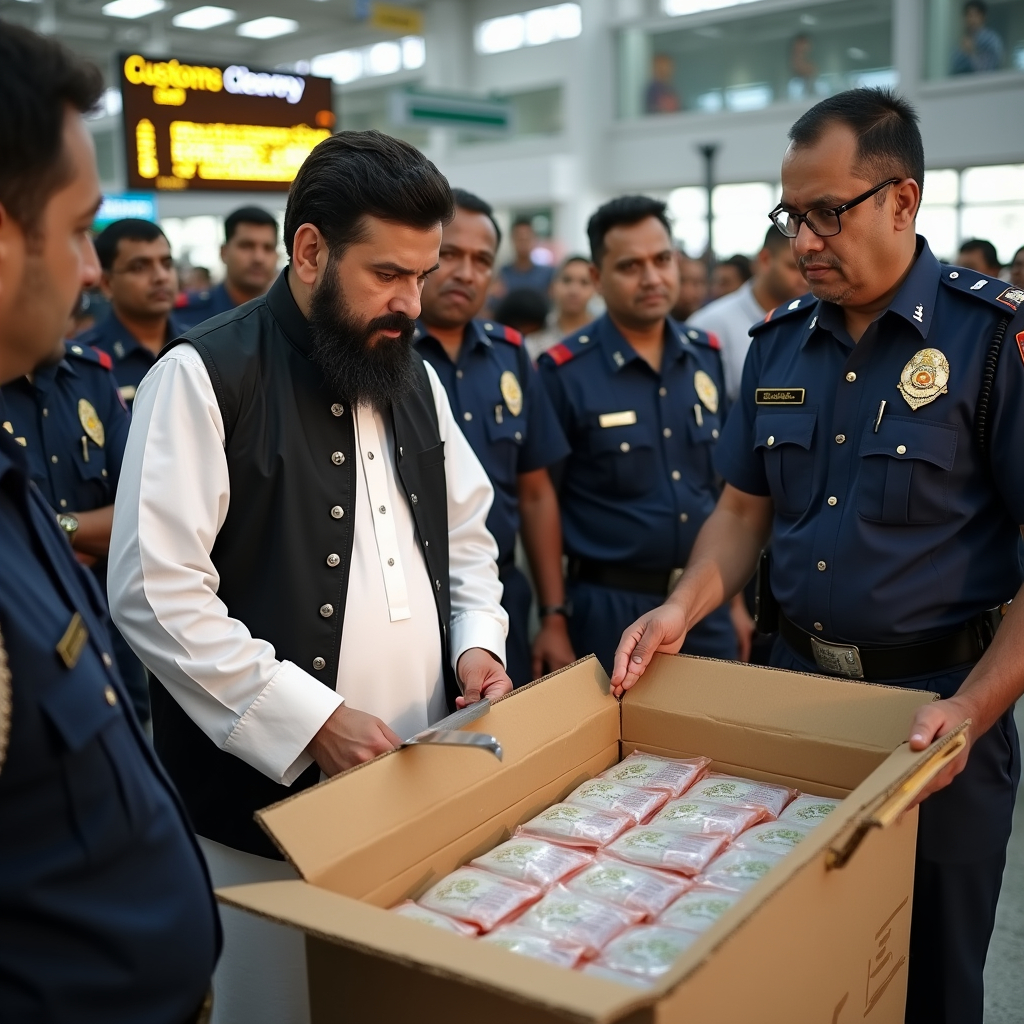
Respondent
Mr. Kuldip Singh appeared on behalf of the respondents in the instant case. The following arguments were submitted by the learned counsel on behalf of the respondents against this appeal:
- The Hon’ble Court should not set aside the judgement as passed by the High Court and Trial Court, as the guilt of the accused has been established before both courts beyond any reasonable doubt.
- The appellant exercised his option of being searched by the gazetted officer, and the legal requirements of Sections 42 and 50 of the NDPS Act were complied with. The provisions under Section 50 NDPS were not attracted in any event of the search and seizure of the carton.
- There were certain discrepancies regarding the records of recovery, but the same cannot be considered to be a vital flaw in the case of the prosecution, learned trial court and the High Court had considered the practices prevailing in the Customs Department to appreciate the evidence brought on record, and having recorded their satisfaction about that, the impugned judgements do not warrant any interference.
- Section 108 of the Customs Act, which provides for the confession in front of the customs department, is not hit by Section 25 of the IEA. They are admissible as evidence in the court and are hence reliable to record the judgement of conviction.
Laws discussed in Noor Aga vs. State of Punjab and Ors. (2008)
The following provisions of various laws were discussed in the case at hand:
Customs law, 1962
The Customs Law of 1962 was made to regulate the operations related to narcotics and psychotropic substances. The main aim behind the enactment of this law was to implement the provisions of International Conventions on Narcotic Drugs and Psychotropic Substances and the matters connected therewith.
- Section 110, authorises the proper officer, as mentioned in the Act, to seize goods, documents, and other things.
- Concerning several factors like hazards, vulnerability to theft, etc., the government has issued certain guidelines regarding this Standing Order No. 1 of 1989, for the disposal of such narcotics and psychotropic substances.
Heroin was one of the items listed for disposal under Section 1 of this standing order.
- The following are relevant provisions of the standing order for the instant case:
Paragraph 3.1 provides that the original wrappers shall be preserved, and a detailed inventory shall be prepared of the packages and the containers after the sampling. This shall be enclosed with a panchnama.
Paragraph 6.1, provides for a certificate of destruction containing all the relevant data to be prepared as per Annexure III. Three copies of the same shall be made. The original copy is to be posted in the godown register, the duplicate copy is to be retained in the seizure file, and the triplicate copy is to be kept by the disposal committee. This shall be duly signed and endorsed by the chairman as well as members of the committee. This could also have the effect of a panchnama.
NDPS Act, 1985
Earlier, narcotics and psychotropic substances were controlled by three different statutes namely:
- The Opium Act, of 1852
- The Opium Act, of 1878 and
- The Dangerous Drugs Act, 1930.
The provisions of these enactments became obsolete due to the passage of time and developments in the field of illicit drug trafficking and drug abuse at the global level. To overcome this issue, a comprehensive and advanced law was the need of the hour. Following this, the Narcotics, Drugs, and Psychotropic Substances Bill was introduced in the parliament. Following are the relevant provisions of the act in the instant case:
- Section 2(4)(XIV), defines the narcotic drugs. As per the provision, narcotic drugs include coca leaf, coca leaf, cannabis (hemp), opium, and poppy straw and include all manufactured goods from these drugs.
- Section 2(VIIIb) provides information about the “illicit traffic” of narcotics and psychotropic substances, which means:
- Cultivation of coca plants or gathering any portion of it.
- Cultivation of the opium poppy or any cannabis plant.
- Producing, manufacturing, possessing, selling, purchasing, transporting, warehousing, concealing, using or consuming, importing inter-state, exporting inter-state, importing into India, exporting from India, or transhipping narcotic drugs or psychotropic substances.
- Dealing with any of the narcotic drugs or psychotropic substances other than those mentioned above.
- Handling or letting out any premises for any of the activities mentioned above.
- Section 2(VIIa) defines the commercial quantity of narcotics and psychotropic substances as quantities greater than the quantity specified by the central government in its official gazette. The commercial quantity prescribed for heroin is only 250 gms.
- Chapter 2 of the Act, Section 4, enables the central government to take all the necessary measures to prevent the abuse of narcotics and psychotropic substances and their illicit trafficking. The central government may appoint authorities or a hierarchy of authorities under such names or names as may be specified to exercise the central government’s functions and powers.

- Chapter 3 of the Act, provides for prohibition, control, and regulation.
- Section 8 bars the possession, sale, purchase, or regulation of any narcotic drugs except to be used for medical and scientific reasons and in the manner extended or provided by the Act or the rules or the orders framed under it.
- Section 9 of the Act provides for the permission, regulation and possession of narcotic drugs and psychotropic substances.
- Chapter 4 of the Act, provides for the punishment.
- Section 22 provides for the punishment of contravention of the psychotropic substances.
- Section 23 deals with the punishment for importing, exporting, and transhipping narcotic drugs and psychotropic substances from India. The maximum punishment in both provisions is twenty years, and the maximum fine can be more than 2 lakhs for the reason to be recorded in writing.
- Section 35 provides for the presumption of the culpable mental state of the accused. The accused may deny and disprove such presumption made about the act done by him.
- Section 54 provides for the reverse burden of proof on the accused for possessing the contraband with him to justify the same up to the court’s satisfaction.
- Section 37 provides that every offence under this act is cognizable. Cognizable offences are those offences in which the police can directly arrest the person who has committed this crime. It provides a non-obstante clause for Sections 19, 24, and 27A and also for offences involving commercial quantity wherein the restrictions have been imposed on the power of the courts to release the accused on bail unless the following conditions are satisfied:
- An opportunity is given to the public prosecutor to oppose such an application for release.
- The person can be released on bail if the court finds certain reasonable grounds that such person is not guilty of such offence, or if released on bail, he will not commit any such offence.
These limitations are in addition to the limitations provided under CrPC or any other law for the time being in force.
- Section 39 describes the power of the court to release certain offenders on probation.
- Section 42 authorises the officer appointed by the central government or state government by general or special order with the power to search, enter, seize, and arrest without warrant or any authorization from such superior officer.
- Section 43 empowers to detain and search any person if he finds sufficient reason to believe that such person has committed any offence at a public place mentioned under this Act. Only the person specified under Section 42 can be empowered to do so.
- Section 50 provides for the conditions under which a search of such a person is to be conducted.
Judgement in Noor Aga vs. State of Punjab and Ors. (2008)
Article 14(2) of the International Covenant on Civil and Political Rights, guarantees a human right to the presumption of innocence; it cannot be equated with the fundamental right and liberty guaranteed under Article 21 of the Constitution of India. The Court agreed that the Act contained certain draconian provisions, and this could have been because the Act was enacted in consonance with the mandate contained in the International Convention on Narcotics Drugs and Psychotropic Substances. As per the opinion of the Court, these provisions cannot be labelled as unconstitutional merely because they put a reverse burden on the accused under certain circumstances.
A statute may be constitutional, but the prosecution therein may not be constitutional. A right to be presumed innocent can be placed on an accused to an extent and subject to certain establishments for certain foundational facts and burden of proof. Indisputably, civil liberties and the rights of citizens must be upheld. Also, the fundamental right is not absolute. In the consistent view of this Court, the reason to believe on the part of the officer is an essential question of fact. This is defined in Section 26 of the IPC and many other provisions of this Act. The procedures laid down under the Act are stringent, and must be strictly complied with.
In the case of the Directorate of Revenue and anr. v. Mohommad Nisar Holia(2007), the Court held that the power to search, seizure and arrest is subject to the satisfaction of the accused, as the term ‘reason to believe has been used’. This belief can be based on the information supplied to the officer by the informant which may be supplied orally. A balance should be maintained between the need for law and its enforcement and protection of citizens from oppression and injustice with regards to following the doctrine of ‘due process’ as enumerated under Article- 21 of the Constitution of India.

Similar to special acts like NDPS, general statutes like IPC also contain provisions regarding the reverse burden of proof. Also, IEA provides for the same concept under certain provisions, such as Section 113A and Section 113B, etc. Even otherwise, this Court, having regard to the factual scenario involved in cases, e.g., if the husband is accused of killing his wife and both were in the same room during the commission of murder, the burden is shifted to the accused.
It is thus required that a balance be maintained between the need for law and its enforcement and the protection of citizens from oppression and injustice.
The constitutionality of the provisions placing a reverse burden of proof on an accused must be tested, as it is the responsibility of the state to protect its citizens.
In the case of S vs. Dladla and Ors. (1999), “the court must assess the importance of the right being limited to our society, which must be weighed against the purpose of the limitation. The purpose of the limitation is the reason for the law or conduct that limits the right.”
The court, while quoting this, also kept in mind the criticism made by the academies on this behalf.
The issue of the reverse burden of proof concerning human rights must also be noticed. The prosecution has to prove the case beyond any reasonable doubt as per the common law is concerned. This common law principle is subject to parliamentary legislation to the contrary. It is observed that parliaments have been frequently making inroads on the basic presumption of innocence. Till now, no study has been made in India regarding the trial of offences in the court and in what circumstances the burden is on the accused. About 40% of the cases triable in a Crown Court in the UK appear to violate the presumption.
As per Article 11(1) of the Universal Declaration of Human Rights, 1948, everyone has a right to be presumed innocent until proven guilty. Similar provisions have been made in Article 6.2 of the European Convention for the Protection of Human Rights and Fundamental Freedoms, 1950, and Article 14.2 of the International Covenant on Civil and Political Rights 1966.
In the case of Regina vs Lambert (2001), the House of Lords read Section 28(2),(3) of the Misuse of Drugs Act, 1971 in a manner to make it compatible with the rights mentioned under the European Convention and concluded that both the provisions create an evidential burden of proof on the accused.
The applicability of the same doctrine of compatibility can be equated with the doctrine of constitutionality in India. Section 35 and Section 54 of the NDPS Act may have to be read with Articles 14 and 21 of the Constitution of India.
The Court, after considering several other judgements, held that the provisions imposing a burden of proof shall be complied with strictly and also may be subject to proof of some basic facts as envisaged under the statute in question. It further held that Sections 35 and 54 cannot be said to be ex-facie unconstitutional.
Burden of proof
Indisputably, the punishments and the provisions of the NDPS Act are strict and strictly interpreted; hence, it becomes more onerous for the prosecution to discharge the burden of proof beyond any reasonable doubt. To give an effect to the concept of wider civilisation, a heightened scrutiny test must be invoked to maintain a balance between the intent of the parliament and the international conventions and the human rights as declared by the UN Declaration of Human Rights. According to criminal jurisprudence, a high degree of proof is required for a strict offence. To convict an accused, a high degree of assurance is needed.
In the case of State of Punjab v. Baldev Singh(1999), it was held that it should be kept in mind that severe the punishment, the greater the care should be taken concerning the safeguards provided in the statute.
It is a well-settled principle that the case may, prima facie, look ugly and may shake the conscience of the Court, but this cannot be a substitute for legal evidence.
Sections 35 and 54 definitely put a burden on the accused and also raise a culpable mental state on the part of the accused, but this presumption will only be considered if the circumstances contained therein are satisfied. Initially, the burden is on the prosecution and then shifts to the accused. Even after that, the standard of proof required by the accused is less than the standard of proof needed for the prosecution. The standard of proof is required to be proved beyond any reasonable doubt to prove the guilt of the accused, but it is a preponderance of probability on the accused. If the prosecution fails to prove the foundational facts, to attract Section 35 of the NDPS Act, the actus reus here, which is possession of contraband with the accused, cannot be said to have been established.
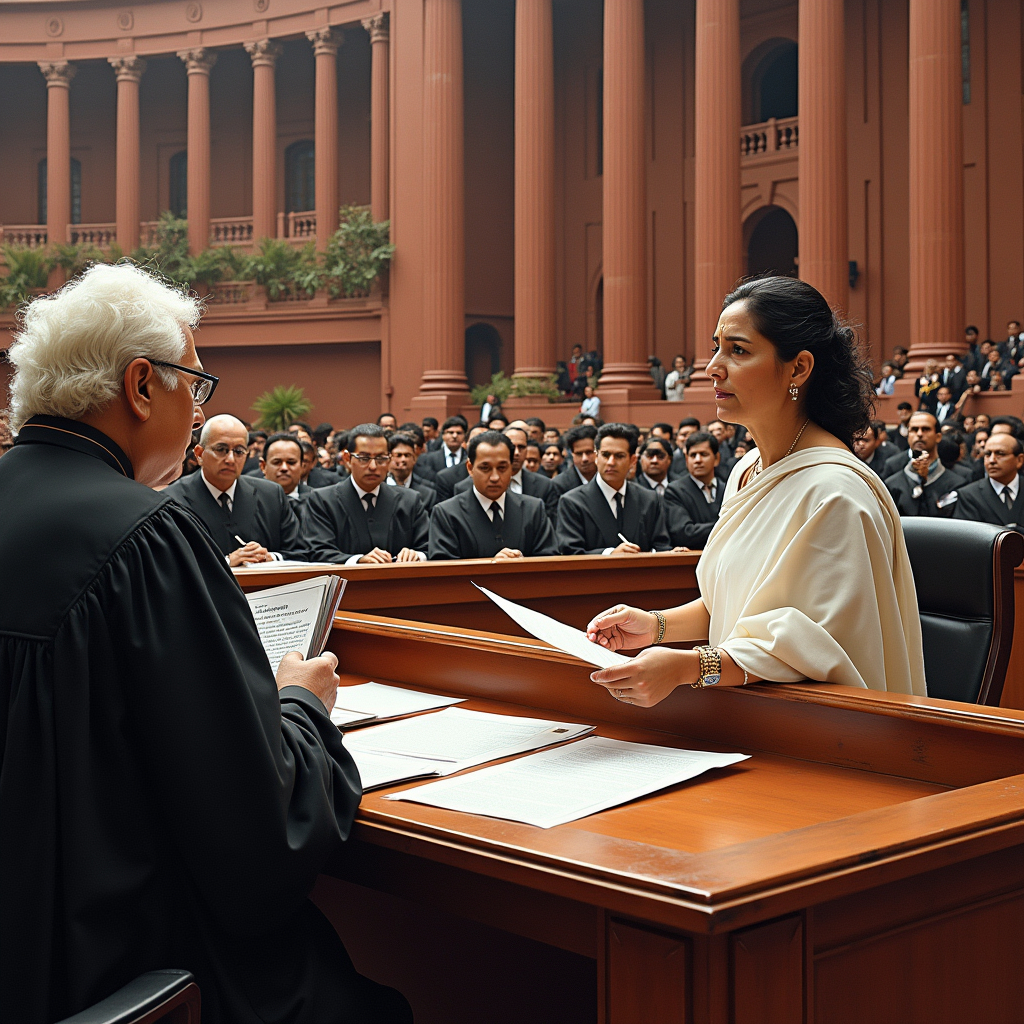
To bring it into consonance with this section, the essential to Section 54 of the NDPS Act, the element of possession of contraband is necessary to shift the burden of proof on the accused.
The general rule, though, would continue to be operative, but the possession of contraband has to be proved beyond any reasonable doubt. The statute in question determines whether the burden of proof is a legal burden or an evidentiary burden. Two things must be taken into consideration while deciding this question, i.e., the purports and the object, this must pass the doctrine of proportionality. The prosecution suffers many difficulties in certain cases, and this may be held to be sufficient to conclude that the burden on the accused is an evidentiary burden and not a legal burden. The trial must be fair, and a reasonable chance must be given to the accused to keep his part and defend himself. The Court shall uphold the dignity of the accused during the trial, the concept of the reverse burden of proof on the accused must justify the loss of protection suffered by the accused.
The statute in India must pass the tests of reasonability contained in Article 14 and Liberty contained in Article 21 of the Constitution of India.
The Supreme Court mentioned that a major error had been committed by the High Court by not placing explicit reliance on Section 108 of the Customs Act. As per Subsection (4), every such inquiry under this provision shall be a judicial proceeding. This provision is solely for this Act.
The High Court did not pay any attention to this. As per clause (3) of Article 20, no person shall be compelled to be a witness against himself, and Section 108 should not contradict this Article.
The Supreme Court pointed out that the power of the police is to detect crime whereas the powers of customs officers is to check the smuggling of goods and to impose penalties on the loss of revenue being different. When customs officers operate, they not only check the smuggling of goods but also detect the crime and bring the accused into the frame of law.
The Customs Act is an exhaustive law in itself. It not only deals with imposing fines and confiscating properties but also deals with offences that have serious consequences.
As per Section 53 of the NDPS Act, the customs officers are vested with the powers of the station house master of police, and thus the same would fall under the ambit of Section 25 of the IEA, which states that the confessions given to the police officer by the accused are not admissible in court.
The Apex Court stated that Section 53A of the Customs Act makes such statements relevant, and thus the confessions cannot be the sole basis of conviction in view of Section 108 of the Customs Act hence, the observation of the High Court is incorrect.
An important inference was drawn by the Court that the appellant would have been subject to duress and coercion, and would be clear of the fact that the accused is an Afghan national. He may know English, but the use of legal jargon that is specifically mentioned in the laws, such as homogeneous mixtures and drug detection kits, etc., possibly cannot be known to him. The possibility of the fabrication of the confessions obtained by the customs officer cannot be ruled out. It further stated that “the constitutional mandate of equality of law and equal protection of law as adumbrated under Article 14 of the Constitution of India cannot be lost sight of. The courts, it is well settled, would avoid a construction which would attract the wrath of Article 14. It also cannot be oblivious to the law that the Act is a complete code in itself and, thus, the provisions of the 1962 Act cannot be applied to seek conviction thereunder.”
In the famous case of Aloke Nath Dutta vs State of West Bengal (2006), the Supreme Court stated that the court cannot rely on the retracted confession without any cogent evidence and satisfying itself that such confessions were trustful. Evidence brought on record by the judicial confession that stood to be retracted should be sufficiently corroborated by other reliable evidence by the Court before relying upon them.
Another thing that the Court took into consideration was that the procedure of arrest and seizure for proceeding against the person under the Customs Act cannot be different only because the authorities appointed were different under different cases. The purpose of such seizure and arrest is more important, and the law applicable on this behalf must be certain and uniform.

As per the Section 138B of the Customs Act, the following two essentials must be satisfied:
- The statement should be made at first instance and signed by the person before the competent customs authority.
- The statement must have been made during an inquiry or proceeding under the Customs Act.
Once these two essentials are satisfied, the statements are considered to be relevant and can be used to state the truth. Clause (a) and (b) talk about two different persons. The legislatures might have in mind that sometimes, witnesses do not support the prosecution, for example, Panch witnesses and only in such cases an additional opportunity given to the prosecution to criticise the said witness and to invite a finding from the court not to rely on the assurance of the court based on the statement recorded by the Customs Department, and for that purpose, it is envisaged that a person may be such whose statement was recorded but while he was examined before the court, it arrived at an opinion that is statement should be admitted in evidence in the interest of justice which was evidently to make that situation and to confirm the witness who is the author of such statement but does not support the prosecution although he made a statement in terms of Section 108 of the Customs Act. The Court is not concerned with such witnesses. The confessional statement thus cannot be used in any manner under Section 138B of the Customs Act and such evidence is considered to be weak.
Non-production of physical evidence
As per the prosecution, 1.4 kg of heroin was concealed by the accused in cardboard for carrying grapes which were recovered at Raja Sansi Airport. Certain points need to be proved for this which are mentioned below:
- The cardboard carton was used to carry such a substance to test the veracity.
- The bulk to be produced in the court to establish the quantity recovered from the accused.
- Samples of the concealed substance to prove whether the substance was a contraband known as heroin or not.
Interestingly, the cardboard carton was not produced before the Court stating that it went missing.
The High Court, in its judgement, said that, as per the prosecution story, the appellant was a member of the crew party and hence was carrying his luggage, including the suspected carton. He himself produced it for customs clearance. It is clear that the carton carrying the disputed substance was under his immediate control. There was no special tag on the carton like other passengers who boarded the aircraft, only the accused knew what was being carried in the carton, therefore, the element of possession of the contraband is doubtful, and the presumption of culpable mental state under Sections 35 and 54 of the NDPS Act has to be drawn against him.
This inference was drawn only on the basis of the assertion of the witness that the contraband had been recovered from the carton in the possession of the accused. This relied on the fact that the crew members carried their own luggage and that any special tag in the carton was absent. No explanation was given or taken on record regarding the absence of a carton from which the contraband was alleged to be recovered. The absence of this carton sincerely undermines the case of the prosecution and reduces the evidentiary value of the statements of the witness regarding the recovery of contraband from the accused.
The contravention of the guidelines by non-perseverance of the original wrappers mentioned under Section 3.1 of the Standing Order No. 1 of 1989 cannot be conveniently overlooked by the Court.
Such guidelines cannot be blatantly flouted, and compliance with such guidelines must be insisted on so that the sanctity of the physical evidence in such cases remains intact. In the instant case, the non-compliance with the guidelines by the investigating authorities leads to the adverse inference that if such evidence had been produced, the same would go against the prosecution.
The second major omission on the part of the prosecution cannot be obliviated as the contraband seized was not produced in the Court. In the defence of this omission, the prosecution stated that the contraband was destroyed. This was done without any authority. As per the law concerned, such an order shall flow from the orders of the magistrate. No notice was given to the accused regarding the destruction of such property.
The Apex Court also observed a distinction between Section 110(1B) of the Customs Act and Section 52A(2) of the NDPS Act and stated that the former didn’t contain anything like Subsection 4 of Section 52A. It is important to note that paragraph 3.9 of the Standing Orders requires pre-trial disposal of the contraband.

The exhibit PJ is merely the order of authentication for the disposal of the seized substance. The High Court, in its judgement, would have relied upon the general practice of the customs department to obtain such a certificate before the destruction of the case property.
As per the arguments of the learned counsel of the prosecution, it is a general practice followed by the customs department to obtain a certificate under Section 110(1B) of the Customs Act before the destruction of the case property, and under sub-clause (c) of the same clause, a sample is taken out of the case property to obtain a certificate of correction and avoid any subsequent dispute regarding the case property. The customs department committed certain irregularities, like not serving a notice to the accused or not informing him, etc. while obtaining the said certificate from the court if the property was to be destroyed later. However, these irregularities cannot be said to be a vital flaw to allow the appellant to draw any benefit out of them, especially when it is well settled that the confessions made by the appellant were made voluntarily. Similarly, the non-production of disputed cartons cannot be said to be fatal for the prosecution.
The Court observed that evidentially, it would be incorrect to allow it to proceed without the production of the physical evidence. Firstly, no such practice is mentioned under the Customs Act, and no witness talked about such practice. The existence of any such practice cannot be a substitute for any evidence on which a court relies. The High Court failed to take into consideration that the certificate issued under Section 110(1B) of the Customs Act is merely a certificate of authentication and nothing else. Authority for the disposal of case property would require assent from the Court under Section 52A of the NDPS Act. The High Court also failed and neglected to consider that the case property is physical evidence and the property of the Court hence must be disposed of in a strict manner as prescribed by the Law.
It was further observed that the High Court didn’t consider the non-production of the physical evidence as fatal to the case of the prosecution, but it raised a dent in the credibility of the prosecution.
Even if, for the sake of the argument, it is accepted that the bulk quantity that was seized was destroyed, the samples taken out of them were to be necessarily produced as primary evidence in the Court and establishing the fact that the bulk recovered was heroin. The prosecution failed to produce samples of the seized material as well.
Indisputably, no explanation was given regarding the two samples that were kept in malkhana along with the bulk, the third one was sent to the Central Forensic Science Laboratory, New Delhi.
There were discrepancies regarding the documentary evidence, as well as the original weight of the sample recorded was 5 gms whereas the weight obtained from the sample in the laboratory was 8.7 gms. The colour of the sample was recorded to be brown, and as per the chemical examination report, the colour of the sample was white.
The Court observed that a slight difference in the weights is considerable as the officers would not be carrying good and reliable scales with them, but in the instant case, the property was seized at the airport by the customs authority, and they must have had good and reliable scales with them as the slightest increase or decrease in the weight of the imported articles, whether contraband or any other thing, would make a major difference under the Customs Act.
The court noted more such discrepancies by the prosecution, such as:
- As per Panchnama, the bulk was kept in a cotton bag, whereas while receiving it in malkhana it was packed in a tin.
- They were unsealed at the malkhana and the CFSL as well. Also, they were not produced before the Court.
All such discrepancies create a huge negative inference for the prosecution. It raises a negative inference under Section 114(g) of the IEA, which states that if such evidence had been produced, it would have been unfavourable for the prosecution in the instant case. A permissive inference can be drawn concerning the prosecution’s endeavour to prove the fact of possession of the contraband from the appellant.
Several other such lacunas of the customs department were observed by the Apex Court. The High Court neglected the point of the sanctity of the physical evidence in the instant case by ignoring the crucial flaws in the treatment, disposal, and production of such seized material.
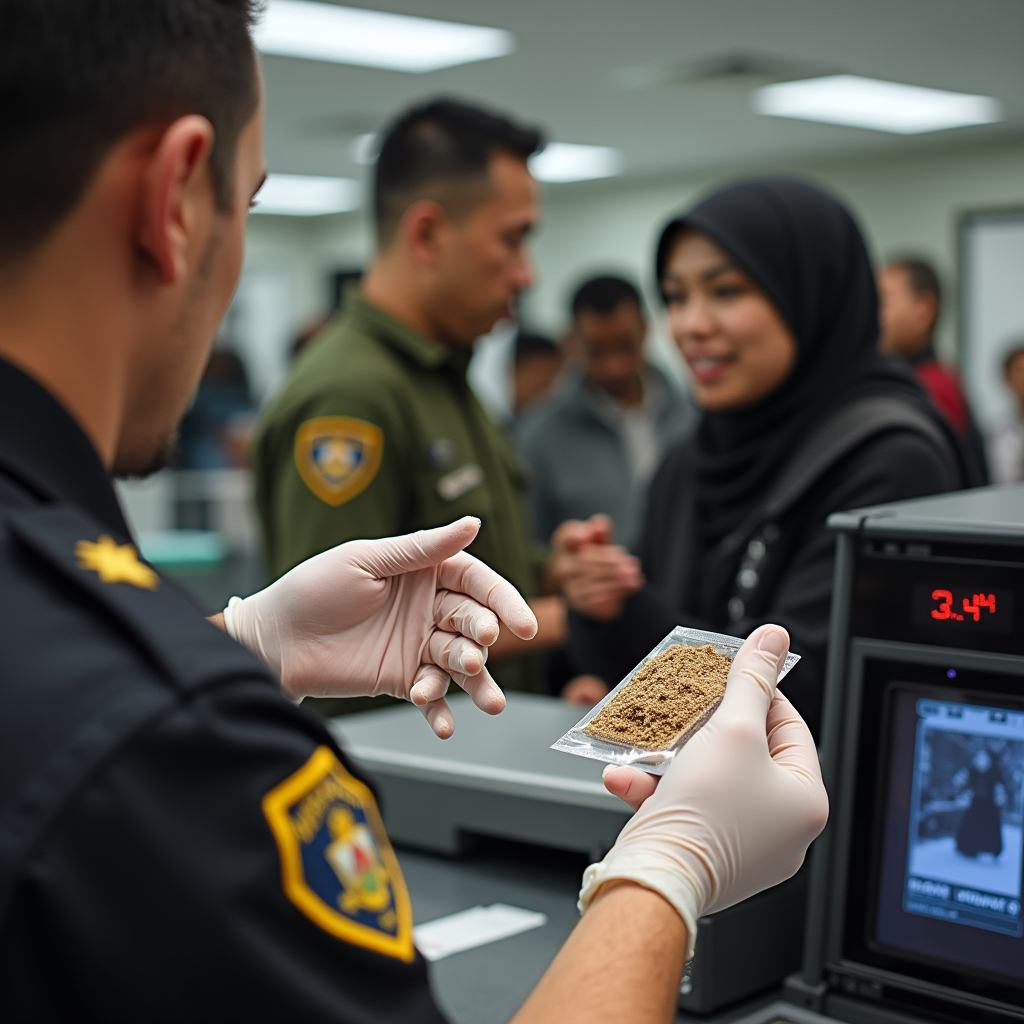
Ratio decidendi
The investigation done in the case was not fair, and hence the judgement of the High Court of Punjab and Haryana is set aside. The constitutionality of Sections 35 and 54 of the NDPS Act was upheld by the Apex Court. The procedures laid down in this statute must be strictly complied with. A huge number of discrepancies were found in the treatment and disposal of the physical evidence by the prosecution. The guilt of the appellant cannot be concluded as the statements made by the official witnesses were contradictory, the independent witnesses were not examined, and the nature of the confession and the recording of such confessions by the appellant do not lead to any such conclusion. The prosecution’s case was found to be incredible, taking the cumulative view of the case. The prosecution failed to establish the fact of recovery of the bulk from the appellant, and therefore the doctrine of reverse burden cannot be applied. The recoveries were not made as per the procedure established by law.
Analysis of the case in the present pretext
Kashmir Singh vs State of Punjab (2023)
Facts of the case
The facts of the case are that on 26/12/2010, Gurucharan Singh, a sub inspector, observed a person sitting on the roadside and making pouches out of a white substance with him in polythene. On seeing the police party, he appeared visibly perturbed. On suspicion, he was apprehended by the police officers. The white substance was found in his fingers. By the authorities, an intoxicant powder, ‘alprazolam’, was recovered from the same. The appellant failed to produce any permit or licence to justify the possession of such contraband, for which he was duly arrested, and his search was done. The sampling was done, and the samples were sent to chemical examiner Kharar. The challan was produced in the court for further trial thereafter.
Issues of the case
- This was an appeal against the order of conviction of the trial court regarding the possession of the contraband.
- Whether the link of evidence is complete?
- Whether the procedure followed by the trial court was flawless and irregular?
Judgement
As per the High Court of Punjab and Haryana, the law regarding the degree of proof in the cases of the NDPS Act has been well established in the case of Didar Singh vs the State of Punjab (2010), the NDPS has made the possession of the contraband punishable along with the harsher punishment for such offences without any exceptions. It provides for the presumption of guilt over the possession of such substances. The High Court mentioned the landmark judgement of Noor Aga vs State of Punjab (2008) and observed that the burden of proof to prove the foundational facts is on the prosecution. It must be proved beyond any reasonable doubt that if the prosecution stands stumbling on this aspect, the benefit is extended to the accused.
The prosecution has failed to complete the link of evidence, and the trial court is flawed in considering the same. The learned trial court was flawed in considering material discrepancies on the part of the prosecution, leading to erroneous conclusions.
There was noncompliance with Section 52-A(2)(c), which provides for the samples to be taken in front of the magistrate; hence, the benefit of the same should have gone to the appellant.
In the instant case where the link of evidence is incomplete, the delay in sending a sample to the chemical examiner is of grave importance and is fatal to the prosecution.
There was non-joining of the independent witnesses during the procedure of recovery, which makes the prosecution’s case improbable, furthermore, a person having contraband in his possession would not sit on the roadside to make pouches out of the bulk, it is the general tendency of criminals to commit such crimes in secrecy and not in a public place.
The appellant has raised a plea of false complicity, and after scrutinising the infirmities in the case of prosecution, it becomes clear that the investigation done was improper. This failure has not only prejudiced the case of the appellant but has also undermined the prosecution’s case.
In the instant case, the recovery is a recovery by chance and not from a personal search of the accused; hence, Section 50 of the NDPS Act, which talks about the search to be done in front of the magistrate or the gazetted officer, is not applicable here.
In view of the discussion above and taking a cumulative effect of the infirmities, it was the duty of the prosecution to prove the case beyond any reasonable doubt, which it failed. The learned trial court ignored certain major discrepancies, hence the appellant was discharged.
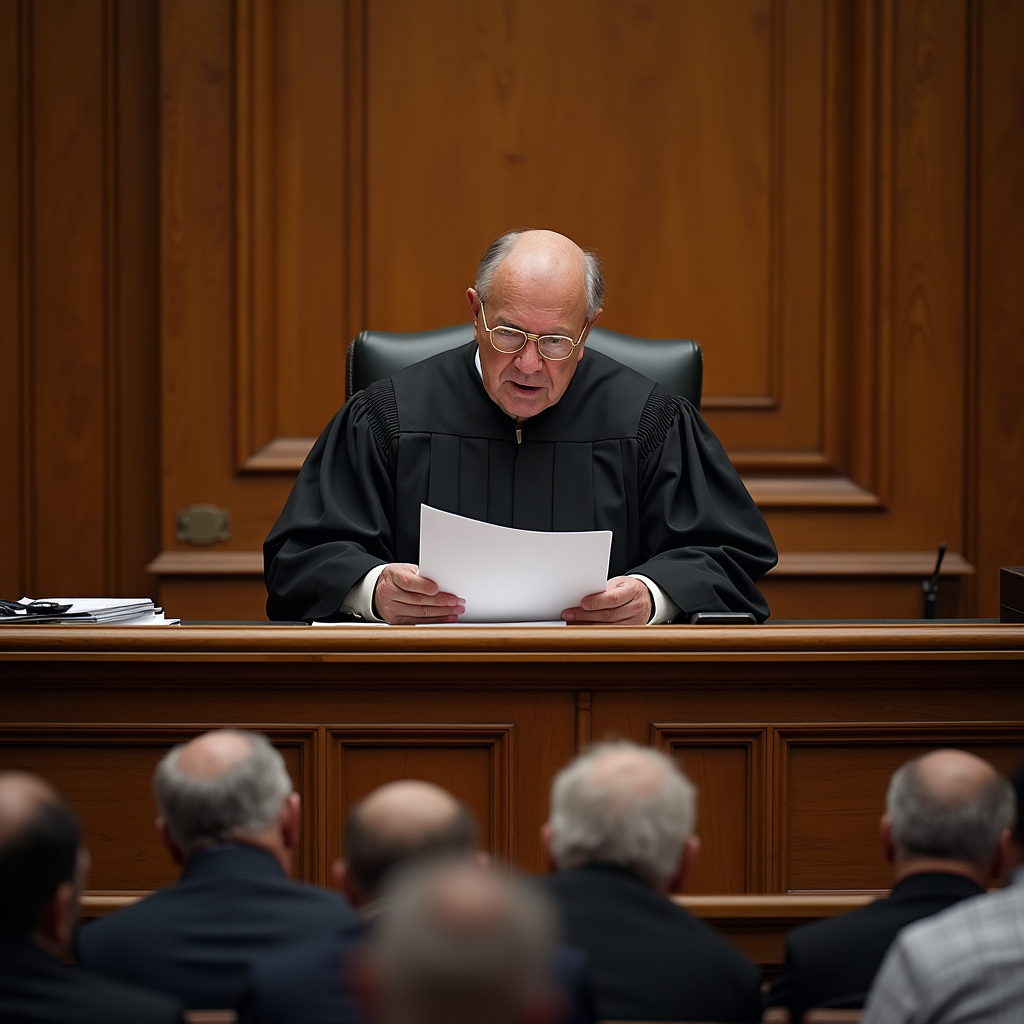
Jitendra and Ors. vs State of M.P. (2003)
Facts of the case
The facts of the case are that the inspector at Datia Police Station, Rajendra Pathak, received information that a person in a vehicle without a number plate was about to transport charas and opium. SDOP was present at the station while this information was received. Two independent witnesses were called by the way of a constable. The police party left for the house where the suspect was expected. The police party asked the accused, Jitendra, to allow them to search the boot space of the vehicle. He was given the option to be searched in front of the police or in front of the magistrate. The accused agreed to be searched in front of the police. On being searched, the police officer found the five packets of charas in a polythene bag, which weighed around 1 kg, and currency notes of Rs 20,000. The samples were taken out of them and sealed. Thereafter, the police entered Jitendra’s mother’s house accompanied by a lady officer. On being searched, 1 kg of ganja was recovered. Two samples weighing 200 gm were taken out of them, and a seizure memo was prepared. The samples were sent for chemical examination to the Forensic Science Laboratory Sagar. The accused were charged with Section 8 read with Section 18 and Section 8 read with Section 20 of the NDPS Act.
The special judge acquitted them under Section 8 read with Section 18 and convicted them under Section 20(b) of the NDPS Act. Jitendra was sentenced to rigorous imprisonment for 10 ten years and a fine of Rs. one lakh, and in default to a further sentence of two years of rigorous imprisonment. Sheela was sentenced to rigorous imprisonment for three years with a fine of Rs. 5000/- and, in default, to a further term of rigorous imprisonment of six months.
The convicts appealed in front of the High Court, their appeal was dismissed, and the conviction of Jitendra was sustained. Sheela’s sentence was reduced, and the fine was reduced to Rs. 2000. The appeal was done in front of the Supreme Court.
Issues of the case
Whether the conviction and sentence of the accused were sustainable.
Judgement
It was the prosecution’s duty in the instant case to prove, with the support of cogent evidence vis-a-vis the possession of the contraband by the accused during the trial. The prosecution failed to produce these contraband in court, which would have been the most cogent evidence for the prosecution case. No explanation was given by the prosecution regarding this failure. In the cases of the NDPS Act, where the punishment is so stringent, merely stating the features of the legal evidence and production of panchnama cannot discharge the liability of the prosecution from proving the burden of proof.
The prosecution failed to prove the material placed on record beyond any reasonable doubt. The benefit of the doubt is extended to the accused. The appeal was allowed, the judgement of the High Court was set aside, and the conviction by the trial court was quashed.
Conclusion
The action of the State must be `right, just, and fair’. It is important and relevant to note that the Latin maxim salus populi suprema lex (the safety of the people is the supreme law) and salus republican suprema lex (the safety of the State is the supreme law) coexist. These lie at the heart of the doctrine that the welfare of an individual must yield to that of the community. The right to a fair trial is a human right and has been envisaged under Article 21 of the Constitution of India. The courts must examine the materials brought on record in each case on their own merits, along with the established principles of laws and the provisions of the CrPC and Evidence Act, to ensure a fair justice between the parties.
Frequently Asked Questions (FAQs)
What do you mean by ‘the reverse burden of proof’ as held in this case?
The reverse burden of proof is a legal concept in which the burden of proof shifts from the party who is normally responsible for proving it to the other party. In criminal cases, the burden of proof shifts from the prosecution to the defence, and in civil cases, the burden of proof shifts from the plaintiff to the defendant.
For example, if A is prosecution and B is accused in a criminal case, A v. B, if the principle of the reverse burden of proof applies, the burden of proof will be on B, which would normally lie on A.
What is the difference between the presumption of innocence and reverse burden?
In the presumption of innocence, commonly called the golden thread principle, the accused is presumed to be innocent until proven guilty, to provide him a fair chance to be heard. On the other hand, the reverse burden initially imposes a liability on the accused to prove his innocence upon being presumed to be guilty.
 Serato DJ Crack 2025Serato DJ PRO Crack
Serato DJ Crack 2025Serato DJ PRO Crack


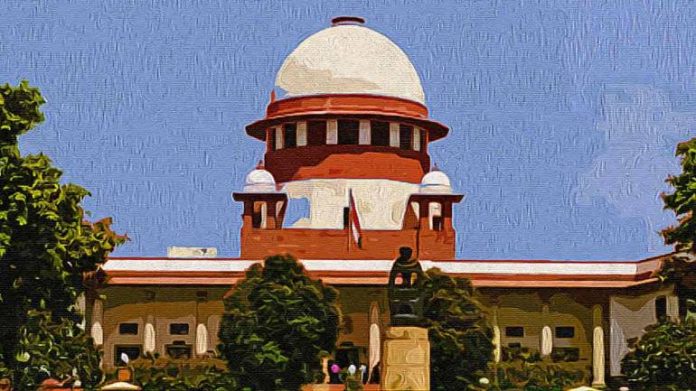





 Allow notifications
Allow notifications



